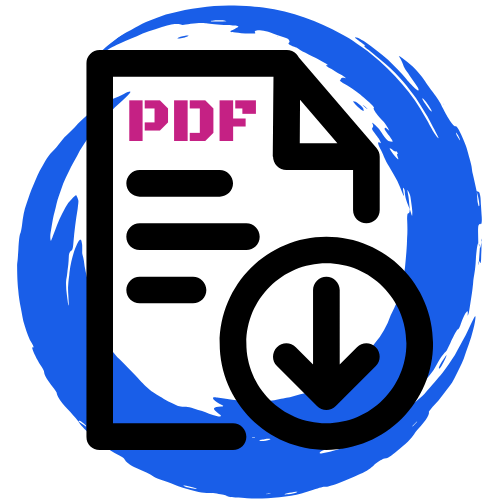The IELTS Reading section tests comprehension and analytical skills, especially in the IELTS True, False, Not Given questions, a key component of both the Academic and General Training modules. These questions demand a deep understanding of the text. You have to detect explicit content, implications, and unstated information. These skills are essential for academic and professional success. In this task, candidates must classify statements as true, false, or not given based on the text. Mastering these questions can significantly affect your overall IELTS score, as it involves understanding not just the text but also its intention and context. Read on for some explanation about the task plus three downloadable tasks to practice.

Contents
Understanding the task
True, False, Not Given questions in the IELTS Reading section are designed to evaluate a candidate’s ability to understand and interpret written text. These questions present a series of statements related to a text, and the task is to assess whether these statements are ‘True’, ‘False’, or ‘Not Given’ based on the content of the text.
- True: When a statement is labelled as ‘True’, it means that the information in the statement is found in the text and is consistent with it. This requires direct or paraphrased agreement between the statement and the text.
- False: A statement is considered ‘False’ if it contradicts the facts or opinions presented in the text. This requires the identification of clear discrepancies between the statement and the text.
- Not Given: This is perhaps the most challenging category. ‘Not Given’ means the information in the statement is neither clearly supported nor directly contradicted by the text. It requires candidates to discern the absence of specific information without making assumptions based on their general knowledge or beliefs.
Strategies for success
Doing True, False, Not Given questions in the IELTS Reading section requires a combination of reading strategies and careful analysis. Here are some key techniques to boost your performance:
Skimming and scanning
- Skimming for the gist: Begin by quickly reading through the text to get a general understanding of the content and structure. Look for the main idea in each paragraph. This overview helps in anticipating what kind of information you might encounter in the statements. This should take no more than 2-3 minutes.
- Scanning for specifics: Once you have the gist, scan the text for specific information connected to each statement. Focus on keywords, dates, names, and any terms that link the statement to parts of the text. This systematic approach saves time and improves accuracy.
Identifying paraphrases
- Understanding paraphrasing: IELTS true, false and not given questions often restate information using different words or sentence structures. This technique is called paraphrasing. Be alert to synonyms and alternative expressions that have the same meaning as the words in the statements.
- Comparing text and statements: Carefully compare the statements with the text. Look for similar ideas expressed in different words. Understanding the context in which words are used is crucial to recognising paraphrasing.
- Focus on the details: The details are what will lead you to the right (or wrong) answer. Negatives, adverbs and other elements in a paraphrased sentence can completely change its meaning, which then also dictates which answer is correct.
Common challenges in IELTS True, False, Not Given
Navigating the True, False, Not Given questions in the IELTS Reading section can be tricky. Candidates often encounter specific challenges that can impact their performance. Understanding these challenges and knowing how to address them is crucial for success. The first big mistake people make is overthinking it. The second is not knowing the difference between false and not given.
First, let’s talk about overthinking the task. Over-analysing the text or reading too much into the statements can lead to incorrect answers. Candidates sometimes infer implications that are not explicitly stated, leading to misinterpretation. Stick to the information given in the text. If a statement requires you to assume or infer beyond what is explicitly mentioned, it’s likely to be ‘Not Given’. Train yourself to differentiate between what is directly stated and what is implied.
Secondly, one of the most common areas of confusion is distinguishing between ‘False’ and ‘Not Given’ statements. These sometimes subtle differences can be especially tricky, so spend extra time reading and rereading to make sure. Here are examples to illustrate the difference:
- Example 1:
- Text extract: “The population of red foxes in the area has decreased significantly in the last decade.”
- Statement: “Red foxes are now extinct in the area.”
- Analysis: The statement suggests complete extinction, which is a stronger claim than a significant decrease. Since the text does not confirm extinction, the statement is ‘False’.
- Example 2:
- Text extract: “Global warming has led to noticeable changes in rainfall patterns.”
- Statement: “Global warming has caused a decrease in rainfall in tropical regions.”
- Analysis: The text mentions changes in rainfall patterns due to global warming but does not specify what these changes are or mention tropical regions. Hence, the statement is ‘Not Given’.
Tips for avoiding common mistakes
- Focus on exact wording: Pay close attention to the wording of both the text and the statements. Even slight differences in language can change the meaning.
- Check for generalisations and extremes: Statements that contain absolutes or generalisations are often ‘False’ unless the text clearly supports them.
- Practice with varied texts: Exposure to different types of texts in your preparation will help you become more adaptable in identifying nuances and varied expressions.
- Regular review and self-assessment: Regularly review your practice answers, especially those you got wrong. Understanding your mistakes is key to improvement.
Practice makes perfect
Achieving competence in IELTS True, False, Not Given questions in the Reading section is a matter of consistent and focused practice.
To build your comprehension skills, read a wide range of texts. This includes newspapers, books, articles, and anything else you can get your hands on. Each type of text presents its own style and linguistic features. Make reading a daily habit. The more you read, the more you’ll improve in speed, comprehension, and vocabulary.
While practicing IELTS tasks, focus on identifying main ideas, supporting details, and the author’s tone. This will help you in quickly checking the accuracy of statements. After completing a set of practice questions, take time to analyse your answers. Understand why certain answers are correct and where you might have gone wrong. This reflection deepens your understanding and improves your analytical skills.
For the IELTS Reading section, you have 60 minutes for 40 questions. That’s fast. Practise completing reading tasks within these time constraints to build speed. But, find a balance between speed and accuracy. You might allocate specific time for skimming, scanning, and answering each question. Adjust this strategy as you practise, based on your strengths and weaknesses. Regularly use timers during practice to get used to the pressure of time. Gradually, you’ll learn to manage your time better, so you can complete all questions within the time given.
The materials
Mastering IELTS True, False, Not Given questions in the IELTS Reading section requires dedication. We’ve discussed several key strategies: understanding the nature of these questions, employing skimming and scanning techniques, identifying paraphrasing, and avoiding common traps. Each of these strategies plays a vital role in enhancing your ability to respond to these challenging questions. Now use them with these three IELTS True/False/Not Given practice tasks to develop your skills.
Download




